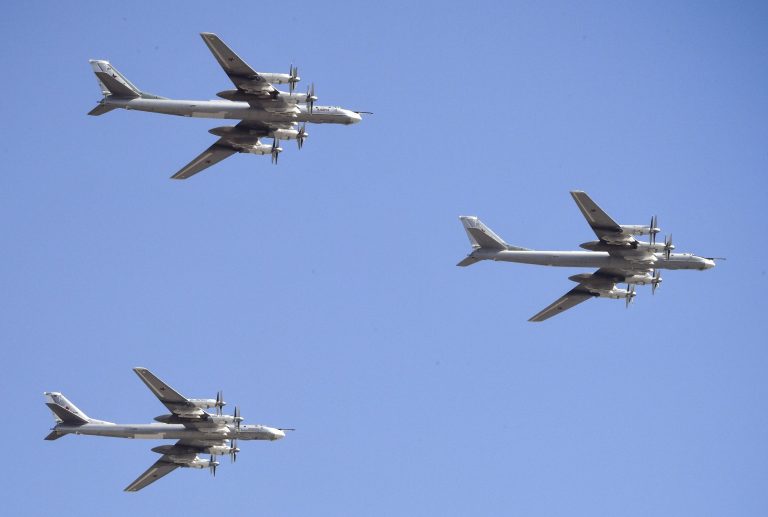In a statement released by both the Chinese and Russian Defense ministries on Nov. 19, it was announced that the two countries had conducted a joint effort in patrolling over the Asia Pacific region.
According to the announcement, China sent two H-6K bombers while Russia sent two Tu-95MC bombers. Together, the aircrafts conducted the joint air patrol over the Sea of Japan and the East China Sea.
The Chinese Defense Ministry stated that during the flight, the aircrafts from the two air forces strictly abided by the relevant provisions of international law and did not enter the airspace of other countries.
Kremlin spokesman Dmitry Peskov also reiterated that the joint patrol was conducted in strict compliance with international and aviation laws.
This is the third joint aerial strategic patrol conducted by the Chinese and Russian militaries and according to China Military Online, “aims to further develop the China-Russia comprehensive strategic partnership of coordination in the new era, upgrade the level of strategic coordination and joint operational capabilities of the two sides, and jointly protect global strategic stability.”
Success
You are now signed up for our newsletter
Success
Check your email to complete sign up
The two nation’s ministries also expressed that the flight operation was part of the annual military cooperation plan between China and Russia and not targeted at any third party.
The Epoch Times reported that Russian Minister of Defense Sergei Shoigu told President Vladimir Putin, at the president’s meeting with permanent members of Russia’s Security Council on Nov. 19, that the flight had lasted more than 10 hours.
Peskov also said that a Su-35S aircraft of the Russian Aerospace Force provided fighter support for the strategic bombers, and an A-50U radar surveillance and control plane had participated in the operation as well.
This isn’t the first time the two nations have caused a stir over international airspace. In early October, the Chinese People’s Liberation Army (PLA) sent a record number of warplanes into Taiwan’s air defense identification zone (ADIZ).
According to the ROC (Taiwan)’s foreign ministry, the aircraft included 28 J-16 fighters, four SU-30 fighters, four H-6 bombers, an early warning aircraft, and an anti-submarine war plane.
Similarly, in 2019, Russian military planes entering South Korea’s airspace were met with hundreds of warning shots from South Korean warplanes during a joint patrol with China.
The Russian defense ministry denied violating any airspace laws.














